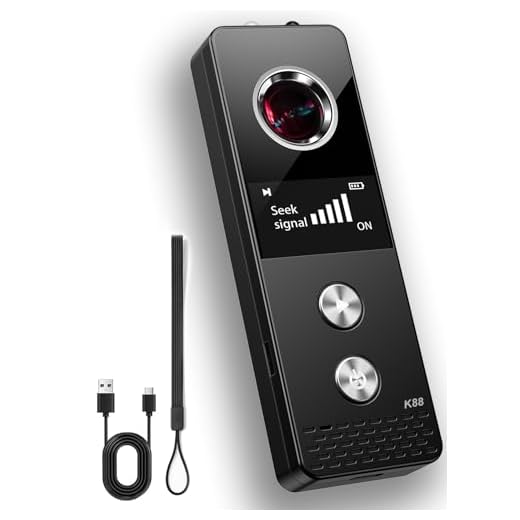




Security cameras have become an essential part of modern surveillance systems, providing a sense of security and monitoring in various environments. However, one question that often arises is how often these cameras are actually checked and monitored by security personnel.
While the frequency of security camera checks can vary depending on the specific location and security protocols in place, it is generally recommended that security cameras are monitored regularly to ensure the safety and security of the premises. In high-security areas such as banks, airports, and government buildings, security cameras are often monitored around the clock to quickly respond to any suspicious activity.
However, in other settings such as retail stores, offices, or residential buildings, security camera checks may be less frequent, with monitoring typically done during business hours or at specific intervals throughout the day.
How often security cameras get checked
Security cameras are typically checked on a regular basis to ensure they are functioning properly and capturing important footage. The frequency of camera checks can vary depending on the specific security protocol in place.
Regular Maintenance Checks
Many organizations conduct regular maintenance checks on their security cameras to ensure they are working correctly. This can include testing the camera feeds, adjusting angles, cleaning lenses, and checking for any technical issues.
Monitoring and Review
In addition to regular maintenance, security personnel also monitor and review camera footage on a consistent basis to look for any suspicious activity or security breaches. This proactive approach helps to identify potential threats and prevent security incidents.
Overall, the frequency of security camera checks depends on the security requirements of the organization and the level of monitoring needed to ensure the safety and security of the premises.
Frequency of security camera checks
Regular checks of security cameras are essential to ensure the effectiveness of surveillance systems. The frequency of camera checks can vary depending on the location, the level of security needed, and the specific requirements of the system. In high-security areas such as banks, airports, and government buildings, security cameras are often checked continuously or at least several times an hour.
In lower-risk environments like retail stores or office buildings, security cameras may be checked on a daily basis or as needed. Some systems are set up to automatically alert security personnel if there is any suspicious activity detected, prompting an immediate check of the cameras.
It is important to establish a regular schedule for checking security cameras to ensure that any issues or malfunctions are promptly addressed. Additionally, conducting random checks can help to deter potential criminals and maintain the overall security of the premises.
Importance of Regular Camera Monitoring
Regular monitoring of security cameras is essential for maintaining the effectiveness of a surveillance system. By regularly checking security cameras, you can ensure that they are functioning properly and capturing clear footage of any potential security threats.
Monitoring security cameras on a consistent basis allows you to quickly identify any issues with the system, such as camera malfunctions or blind spots. This proactive approach can help prevent security breaches and ensure that your property remains safe and secure.
In addition, regular camera monitoring can provide valuable insights into patterns of activity on your property, helping you to identify any suspicious behavior or potential security risks. By staying vigilant and monitoring your security cameras regularly, you can enhance the overall security of your property and protect against potential threats.
Factors influencing camera inspection frequency
When it comes to determining how often security cameras are checked, several factors come into play. The frequency of camera inspections can vary based on the following considerations:
Location
The location of the security cameras can significantly impact how often they are inspected. Cameras in high-risk areas or sensitive locations may be checked more frequently than those in low-risk areas.
Security Policies
The security policies of a particular organization or facility can also influence the frequency of camera inspections. Some organizations may have strict guidelines that require cameras to be checked regularly, while others may have more relaxed policies.
| Factors | Description |
|---|---|
| Size of the facility | Larger facilities may require more frequent camera inspections to ensure comprehensive coverage. |
| Type of surveillance | The type of surveillance being conducted can impact inspection frequency, such as real-time monitoring versus archival footage review. |
| Security threats | The level of security threats in a particular area can dictate how often cameras are checked to mitigate risks. |
Benefits of frequent camera checks
Regular checks of security cameras offer several advantages:
1. Enhanced security:
Regular monitoring ensures that the cameras are functioning correctly and capturing important footage. This helps in identifying and preventing security breaches.
2. Quick response:
By checking cameras frequently, security personnel can respond promptly to any suspicious activity or incidents, minimizing the potential damage.
Frequent camera checks are essential for maintaining a high level of security and ensuring the safety of the monitored area.
Challenges in maintaining camera surveillance
Keeping security cameras operational and effective involves several challenges that need to be addressed regularly. Some of the key challenges include:
1. Technical issues
Security cameras can experience technical glitches, such as camera malfunctions, connectivity problems, or storage issues. Regular maintenance and troubleshooting are essential to ensure that the cameras are functioning properly.
2. Privacy concerns
Privacy regulations and concerns may restrict the placement and use of security cameras in certain areas. It is important to navigate these issues carefully to comply with legal requirements and respect individuals’ privacy rights.
In conclusion, maintaining camera surveillance systems requires ongoing attention to address technical issues, privacy concerns, and other challenges that may arise.
Best Practices for Monitoring Security Cameras
Monitoring security cameras is a crucial aspect of maintaining the security of any premises. To ensure effective surveillance, consider the following best practices:
1. Regular Checks
Security cameras should be checked regularly to ensure they are functioning properly and capturing clear footage. Schedule routine checks to identify any issues promptly.
2. Remote Monitoring
Utilize remote monitoring capabilities to access camera feeds from anywhere at any time. This allows for real-time monitoring and quick response to any security incidents.
By following these best practices, you can enhance the effectiveness of your security camera system and improve overall security measures.
Technology advancements in camera monitoring
With the rapid advancement of technology, security camera monitoring has also seen significant improvements. Modern security cameras are equipped with high-definition resolution, night vision capabilities, motion detection, and even facial recognition technology. These features allow for more accurate and efficient monitoring of areas, increasing the overall security level.
Furthermore, the integration of artificial intelligence (AI) into camera monitoring systems has revolutionized the way security footage is analyzed. AI-powered algorithms can detect suspicious behavior, track movements, and even predict potential security threats. This proactive approach to monitoring enhances the overall effectiveness of security cameras in preventing and responding to security incidents.
Additionally, the rise of cloud-based monitoring solutions has made it easier to access and manage camera footage remotely. This means that security personnel can monitor camera feeds in real-time from any location, providing a more responsive and flexible security system.
Future trends in security camera inspections
As technology advances, the future of security camera inspections is likely to see significant changes. Here are some trends that may shape the way security cameras are checked in the future:
- Automation: With the development of AI and machine learning, security camera inspections may become more automated. AI algorithms can analyze footage in real-time, flagging potential security threats and alerting security personnel.
- Remote monitoring: The ability to monitor security cameras remotely is becoming more prevalent. Security personnel can access camera feeds from anywhere, allowing for quicker responses to security incidents.
- Integration with other technologies: Security cameras may be integrated with other security technologies, such as access control systems and facial recognition software, to provide a more comprehensive security solution.
- Enhanced analytics: Advanced analytics tools can provide valuable insights from security camera footage, such as tracking patterns of behavior or identifying unusual activities.
- Improved maintenance and diagnostics: Future security cameras may include self-diagnostic features to monitor their own health and performance, reducing the need for manual inspections.
These trends have the potential to make security camera inspections more efficient, effective, and proactive in ensuring the safety and security of the monitored area.








